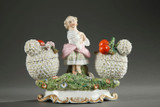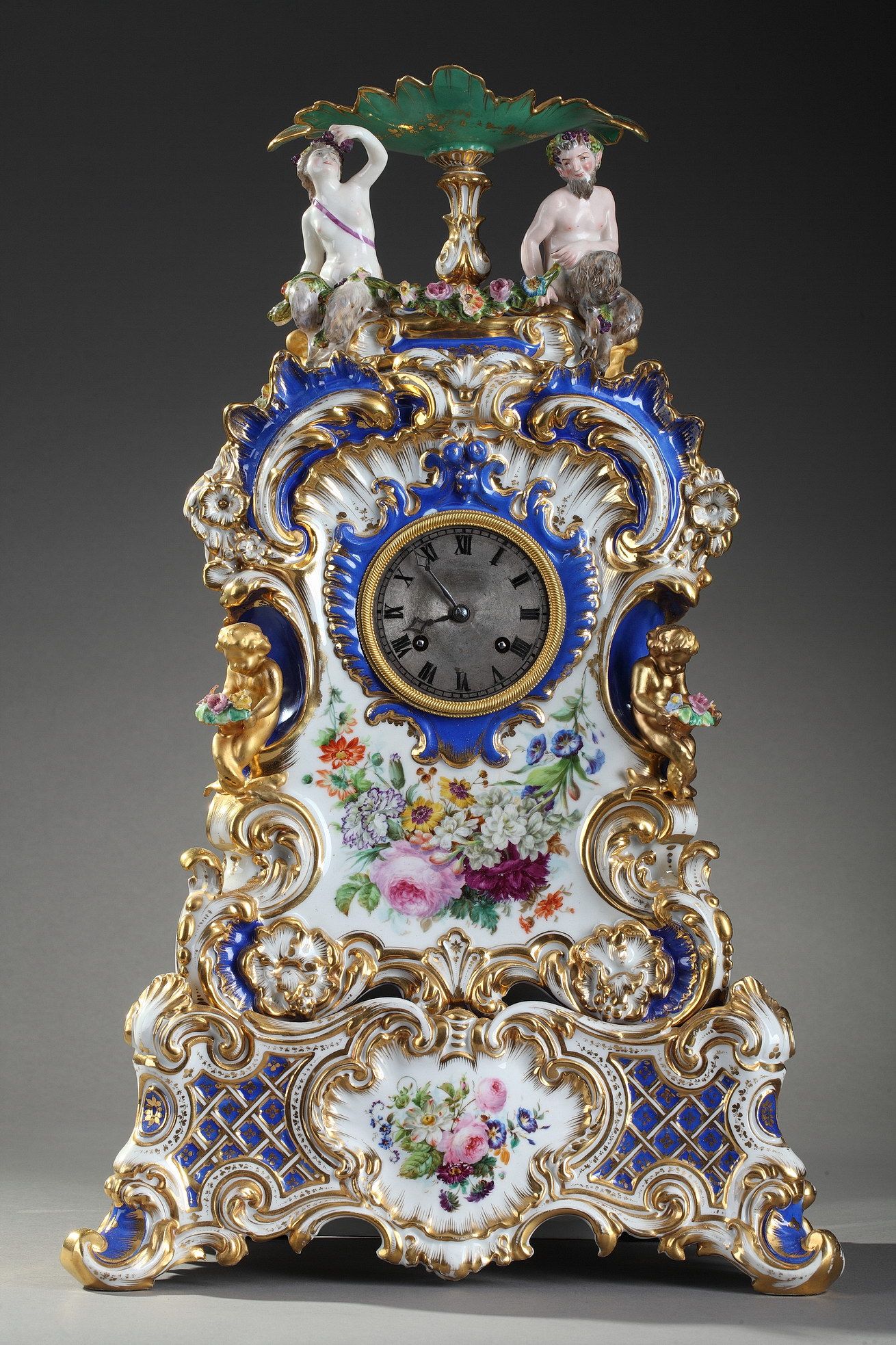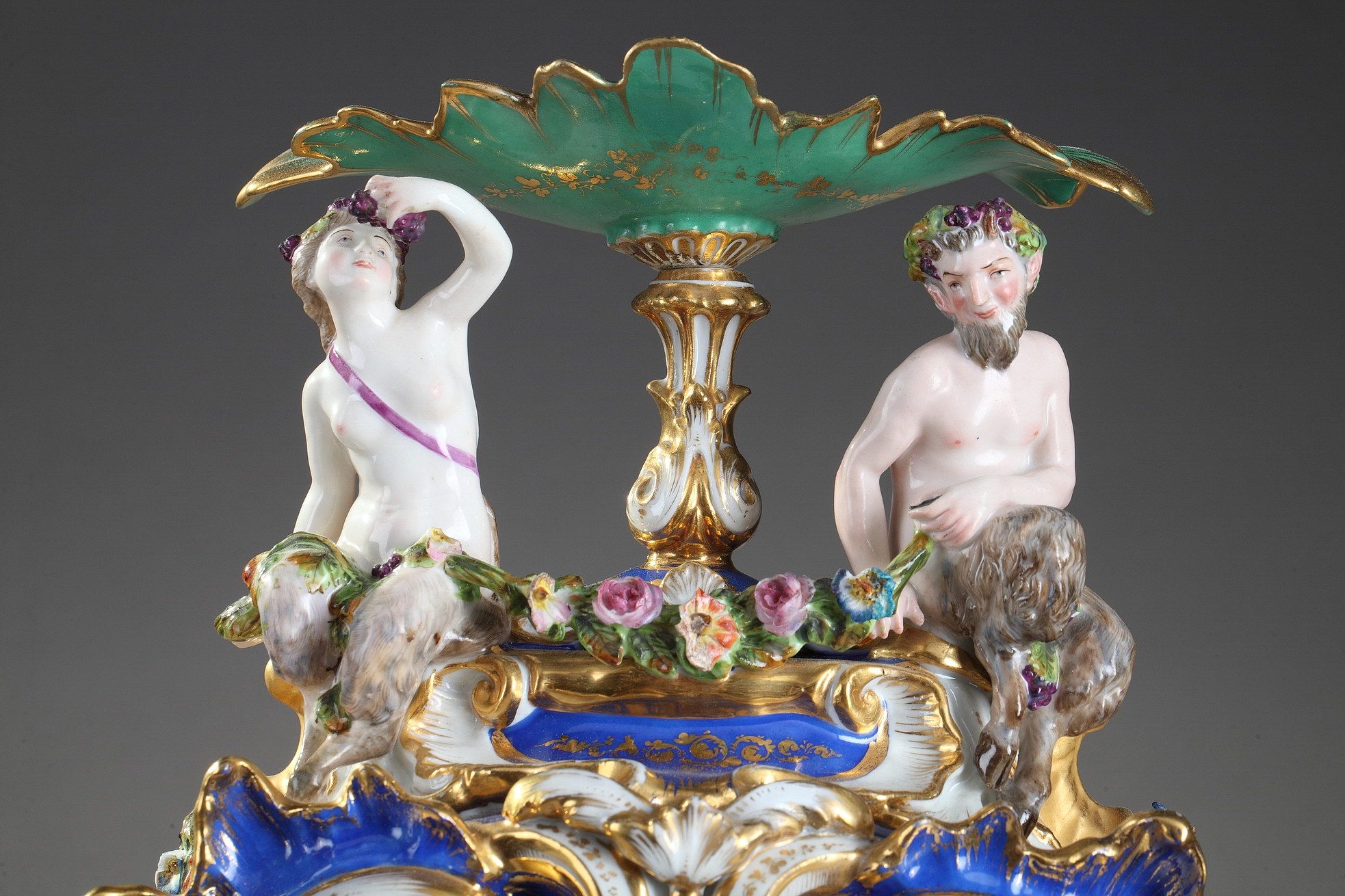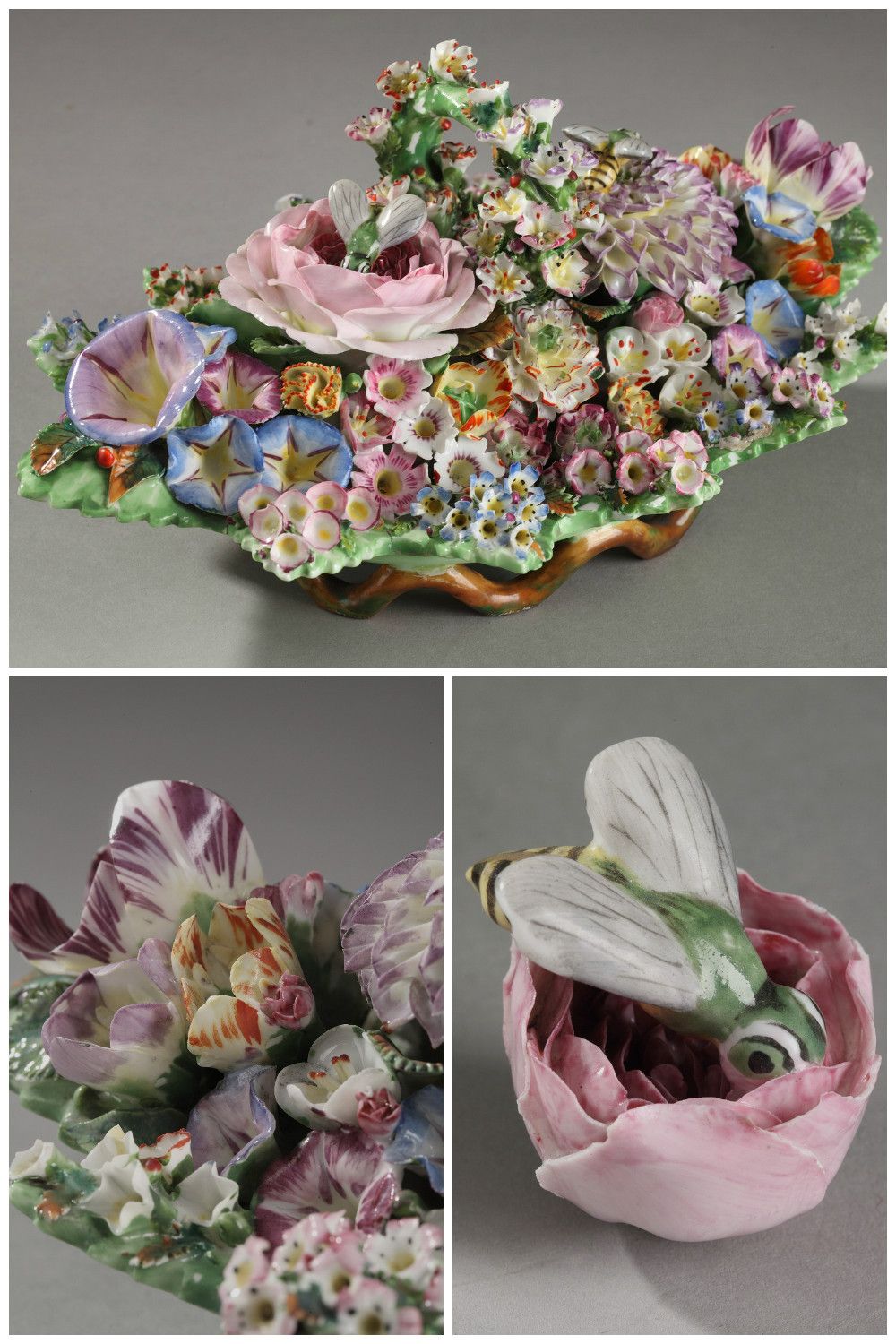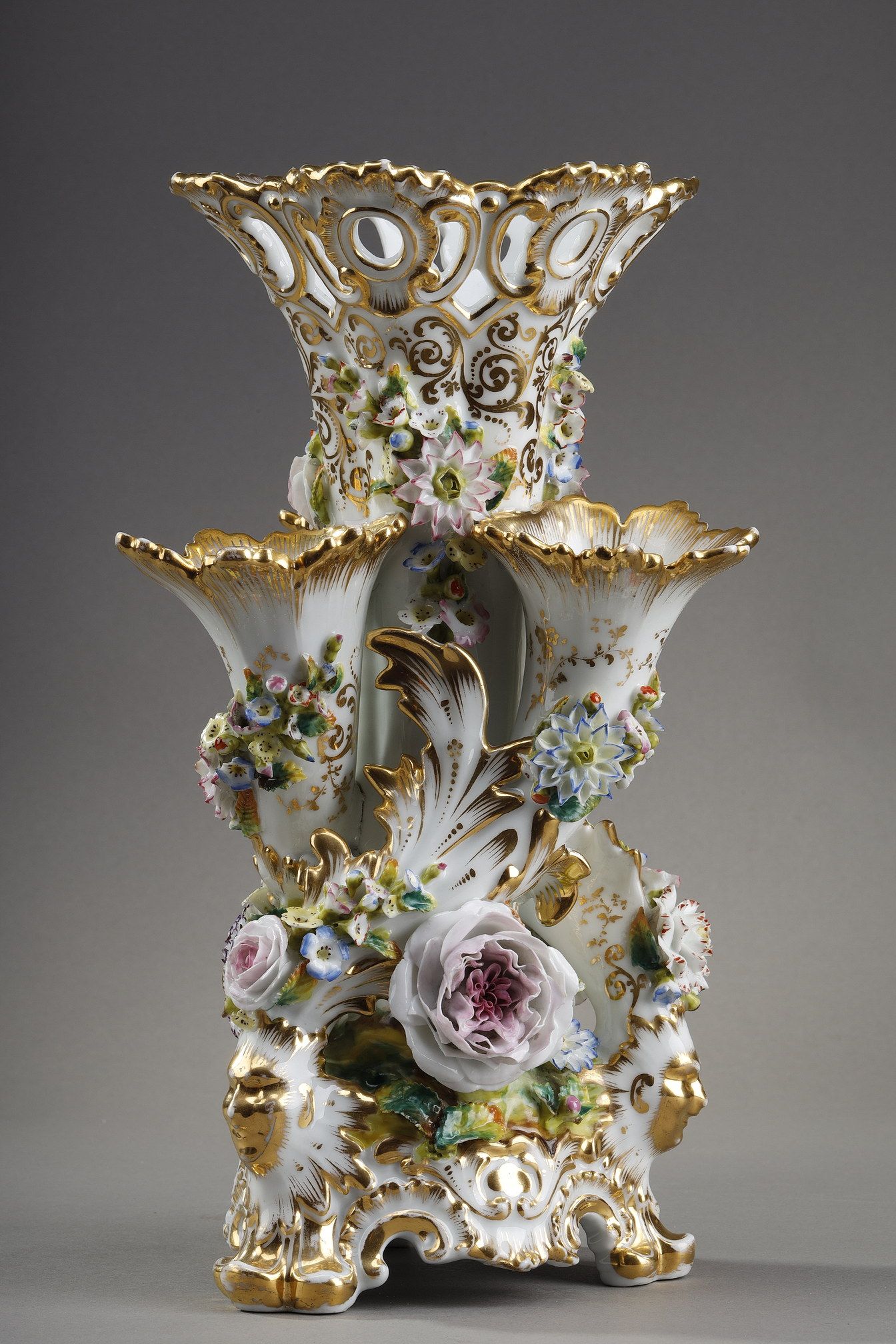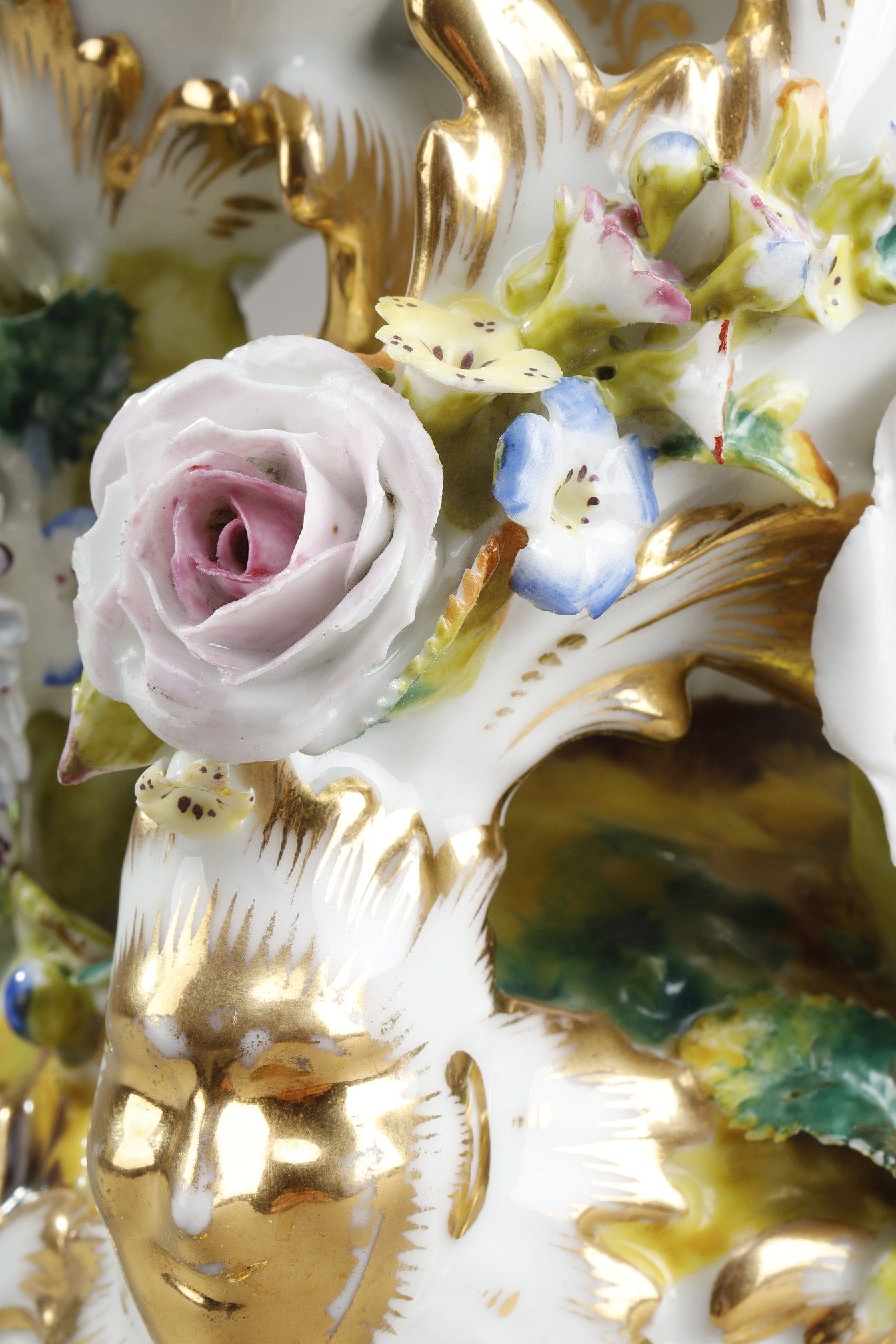In the 1830s, when Parisian decorators and porcelain makers were producing models that perpetuated the neo-classical vocabulary, Jacob Petit (1796-1868) challenged tradition with a wide variety of styles and decorations. This astonishingly extravagant production, which appeared at a time when the art of porcelain was falling into the hands of industry, was a real success and revived the ornamental porcelain trade.
Porcelain clock in the Jacob Petit style
Born in Paris in 1796, Jacob Mardouché, known as Petit after his wife Anne Adelaïde Petit, began studying painting in the studio of Antoine-Jean Gros. By 1820, he was qualified as a porcelain manufacturer, and it was probably from this date onwards that he made numerous trips to Italy, Switzerland and Germany, before settling for a few years in England, where he studied various industries and painted theater sets.
Back in France, around 1830-1831, Jacob Petit published an interior decoration collection of one hundred plates with models of vases, furniture, goldsmiths' and woodworkers' pieces, in which earlier styles are visited, with a preference for Antiquity and the Gothic style. After a short stay in Sèvres, he set up a small workshop in Belleville. His rise was rapid and spectacular, and in 1833 he acquired Baruch Weil's porcelain factory in Fontainebleau, whose production was appreciated by Louis XVIII, Charles X and the Duchesse de Berry. He also owned a decoration workshop in Paris at 26 rue de Bondy.
In 1846, he formed a partnership with Nicolas Moriot, a painter at the Sèvres Royal Manufactory, and set up a small soft-paste porcelain factory in the same town. Five years later, Jacob Petit moved his factory from Fontainebleau to Avon, selling it in 1862 to one of his collaborators, Etienne Jacquemin.
The Jacob Petit factory was one of the most famous of the 1830s-1860s, with an abundant and varied output. In the early days, Jacob Petit made tableware, but from 1838 he devoted himself exclusively to ornamental pieces: flasks, clocks, incense burners, night-lights, teapots, paperweights, vases, torches and small statuettes.
From 1834 onwards, Jacob Petit presented remarkable pieces at Industrial Product Exhibitions, and later at Universal Exhibitions, whose technical innovations won him numerous official awards. However, the accumulation of elements from earlier styles aroused the enthusiasm of lovers of refined objects. This is a highly eclectic body of work, featuring alone or in combination the Gothic "troubadour" style, the Renaissance, neoclassicism, the rocaille style, the Far East with Chinese decor and the Near East with Arab wars and odalisques.
Porcelain inkwell by Jacob Petit
Foreign influences are also evident, following Jacob Petit's sojourns abroad, particularly in Central Europe, where he was able to study a Rocaille style of exuberance unrivalled in France, which he subsequently imposed on his contemporaries. Indeed, at the height of the Romantic era, this artist with an unbridled imagination brought to a climax his contoured, asymmetrical and "bizarre" forms, which easily set him apart from other porcelain makers in Paris. Rocailles abound in decorating angles, stops and even flat surfaces. Turbulent shapes, more or less visible reliefs, sometimes even high reliefs, to which leafy branches, birds, flames, flowers and fruit are added, form a lush decor that contrasts with the sobriety inspired by Antiquity. Colored or gilded, all these forms give the pieces the appearance of wealth so appreciated at the time. The clocks are particularly representative of this taste, with their abundance of rocaille motifs and scrolls reminiscent of the tormented rococo of the other side of the Rhine.
Polychrome porcelain vase by Jacob Petit
One of Jacob Petit's greatest successes were his "snowball" vases, the glory of Meissen in the years 1730-1750. Entirely covered with tiny white flowers in relief, executed with meticulous care, this decoration became the object of veritable outpourings of fantasy at Jacob Petit.
Deeply influenced by Saxon porcelain, Jacob Petit also created numerous statuettes and trinkets in shimmering colors, depicting figures from the courts of Louis XV and Saxony, musicians, shepherds, oriental figures and animals.
These little figurines have a decorative or utilitarian function, ingeniously concealing flasks, nightlights, inkwells, paperweights, bouquet holders or match holders.
For the painted decorations on his porcelain, Jacob Petit used bright, luminous colors reminiscent of 18th-century palettes. The pieces decorated in his workshops have a great freshness; the black, acid green, amaranth or turquoise backgrounds highlight the polychromy of the flowers in relief or the animated scenes with characters from various countries and eras. Vivid colors are complemented by exuberant golds.
Jacob Petit porcelain greyhound Jacob Petit's successful designs were frequently imitated. Indeed, he sold many "blancs" to decorators and merchants in France and abroad.
After two centuries, the work of this prolific porcelain maker appears to be strongly influenced by Romanticism, with the triumph of imagination, sentiment, fantasy and "the exotic through time", as Théophile Gautier put it in the Journal des Goncourt.
Drawing inspiration from everything he had admired on his travels, and skilfully blending previous styles, he nevertheless created a highly personal, immediately identifiable work. In contrast to antique simplicity, Jacob Petit's exuberance is the image of a precious, easily accessible splendor that meets the taste of a new bourgeois clientele eager to decorate their interiors with "effect" pieces.
Bibliography :
Plinval de Guillebon, Régine de, "Jacob Petit, le plus romantique des porcelainiers parisiens", L'Estampille/L'Objet d'art, no. 311, March 1997, pp. 48-57.
Idem, "Les porcelaines de Jacob Petit", Plaisirs de France, no. 365, March 1969, pp. 3-7.
Idem, Faiences et porcelaines de Paris, XVIIIe et XIXe siècles, Dijon, Editions Faton, 1995, pp. 286, 376.
Plinval-Salagues, Régine de, "L'exotisme de Jacob Petit", Art de France, no. 3, 1963, pp. 195-200.
Boisgibault, Françoise, "Meissen et la petite statuaire française", L'Estampille/L'Objet d'art, no. 369, May 2002, pp. 72-82.


